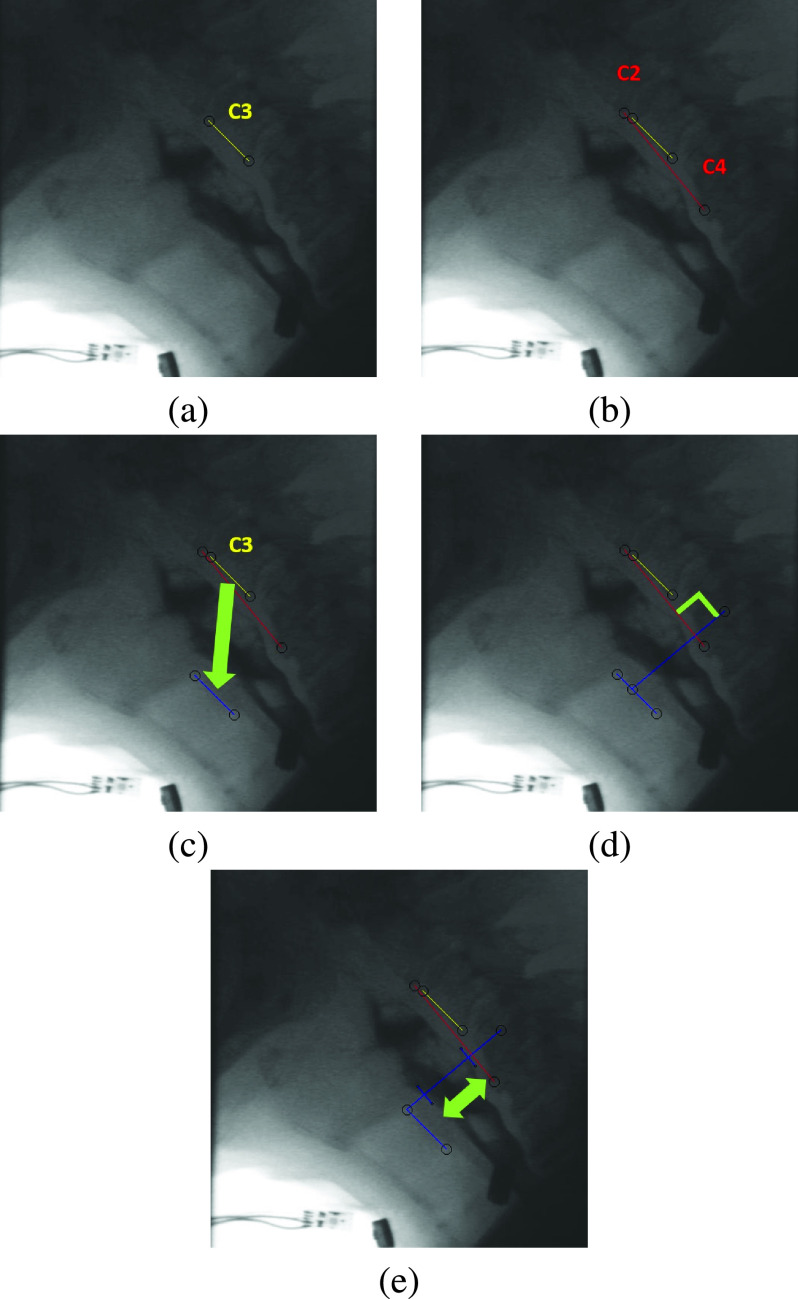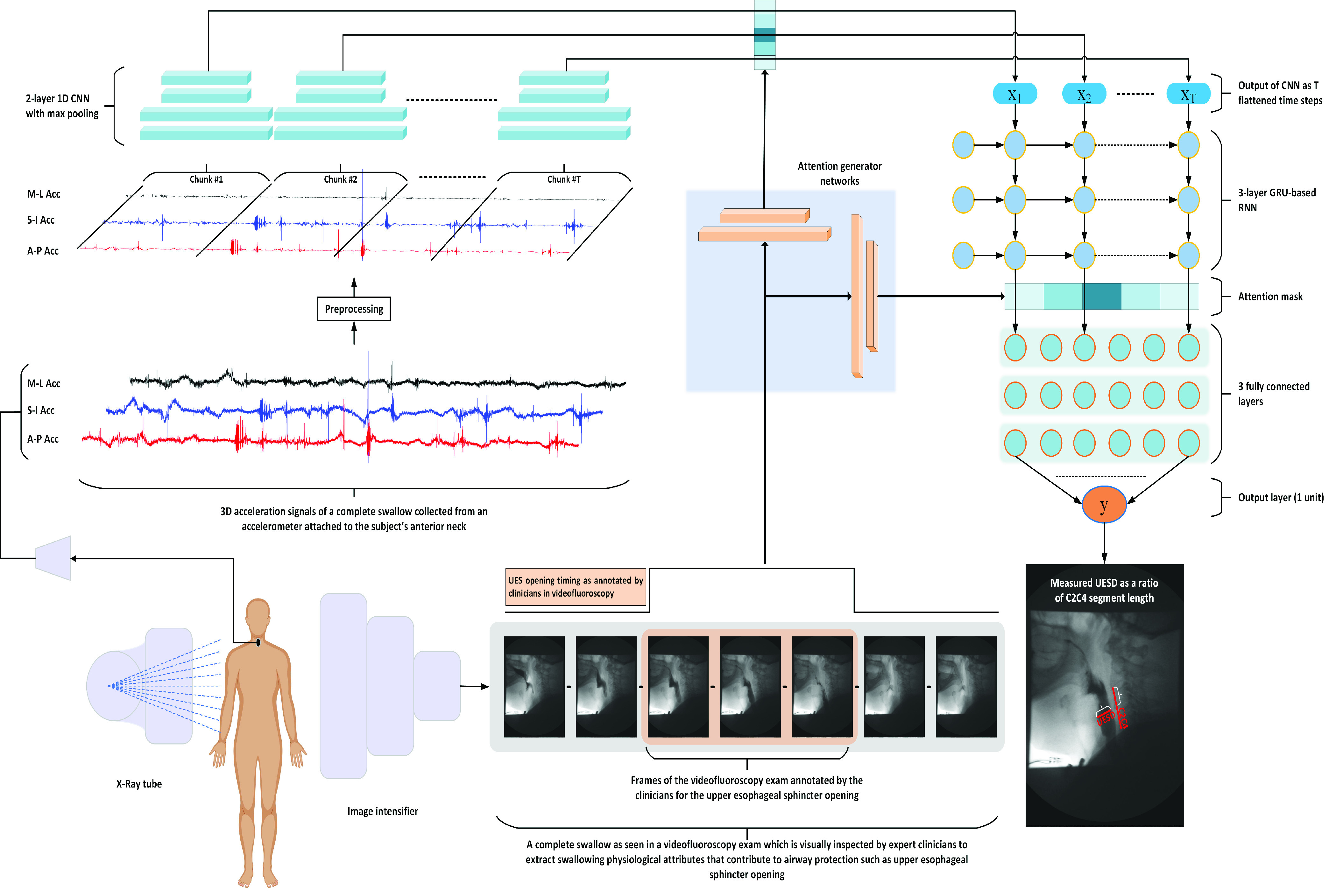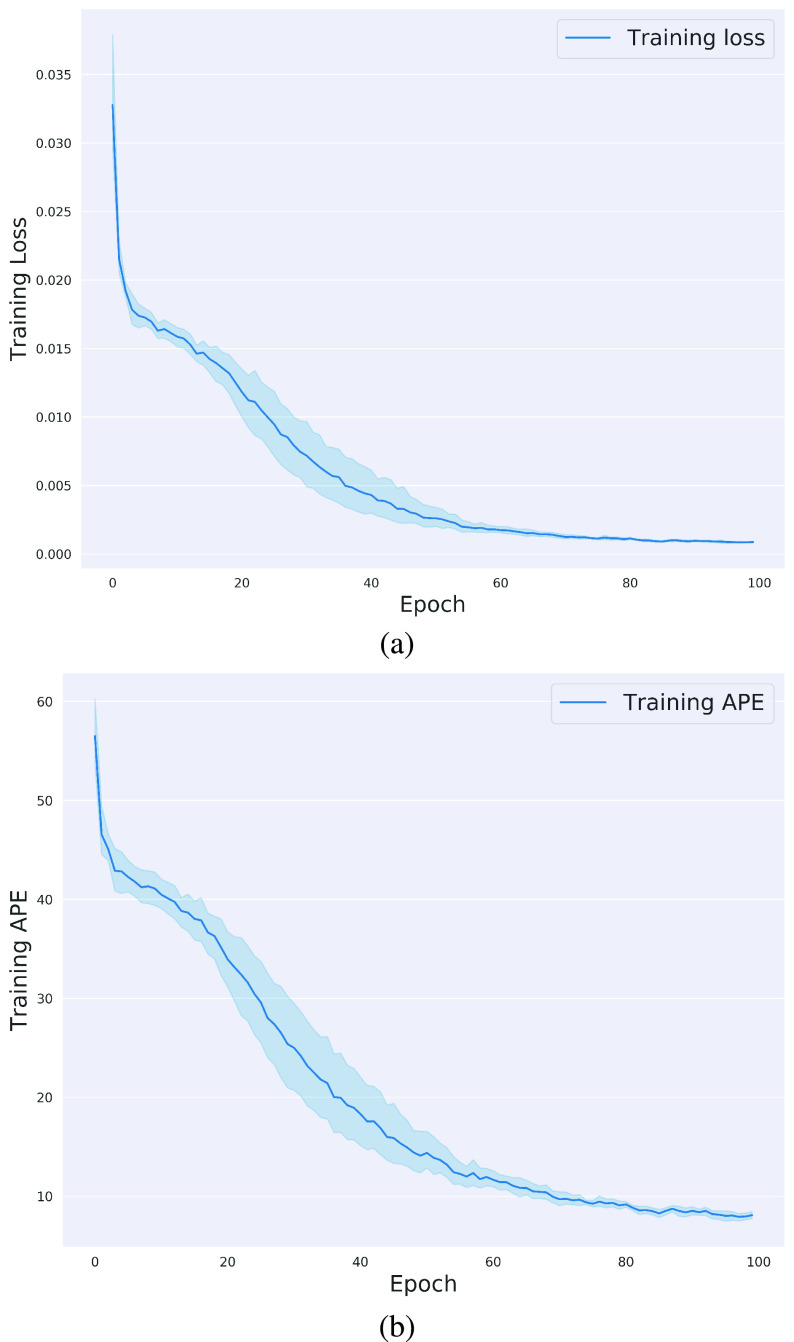基于无创传感器的上食管括约肌前后口最大扩张估计
IF 3.7
3区 医学
Q2 ENGINEERING, BIOMEDICAL
IEEE Journal of Translational Engineering in Health and Medicine-Jtehm
Pub Date : 2023-02-20
DOI:10.1109/JTEHM.2023.3246919
引用次数: 1
摘要
目的:吞咽困难的治疗依赖于训练有素的临床医生在视频荧光透视(VF)中对吞咽的颞空间运动事件的评估。食管上括约肌(UES)开放性扩张是促进健康吞咽的重要运动事件之一。UES开口扩张不足会导致咽部残留物的积聚和随后的抽吸,进而导致肺炎等不良后果。VF通常用于UES开口的时间和空间评估;然而,VF并非在所有临床环境中都可用,并且对于一些患者来说可能是不合适的或不希望的。高分辨率宫颈听诊(HRCA)是一种非侵入性技术,它使用颈部连接的传感器和机器学习,通过分析颈部前部吞咽引起的振动/声音来表征吞咽生理。我们研究了HRCA无创估计UES前后(A-P)开口最大扩张的能力,该能力与人类法官从VF图像中进行的测量一样准确。方法和程序:训练有素的法官对133名患者的434只燕子进行了UES开放持续时间和A-P UES开放最大扩张的运动学测量。我们使用了一种由注意力机制支持的混合卷积递归神经网络,该网络以HRCA原始信号为输入,并估计a-P-UES开放最大扩张的值作为输出。结果:对于数据集中超过64.14%的燕子,所提出的网络估计了A-P UES开口最大扩张,绝对百分比误差为30%或更小。结论:本研究为使用HRCA评估用于吞咽困难表征和治疗的关键空间运动学测量之一的可行性提供了实质性证据。临床和转化影响声明:这项研究的发现对吞咽困难的诊断和管理有直接影响,因为它提供了一种非侵入性且廉价的方法来评估最重要的吞咽运动学之一,即UES张开扩张,这有助于安全吞咽。这项研究,以及其他利用HRCA进行吞咽运动学分析的研究,为开发一种广泛可用且易于使用的吞咽困难诊断和管理工具铺平了道路。本文章由计算机程序翻译,如有差异,请以英文原文为准。



Non-Invasive Sensor-Based Estimation of Anterior-Posterior Upper Esophageal Sphincter Opening Maximal Distension
Objective: Dysphagia management relies on the evaluation of the temporospatial kinematic events of swallowing performed in videofluoroscopy (VF) by trained clinicians. The upper esophageal sphincter (UES) opening distension represents one of the important kinematic events that contribute to healthy swallowing. Insufficient distension of UES opening can lead to an accumulation of pharyngeal residue and subsequent aspiration which in turn can lead to adverse outcomes such as pneumonia. VF is usually used for the temporal and spatial evaluation of the UES opening; however, VF is not available in all clinical settings and may be inappropriate or undesirable for some patients. High resolution cervical auscultation (HRCA) is a noninvasive technology that uses neck-attached sensors and machine learning to characterize swallowing physiology by analyzing the swallow-induced vibrations/sounds in the anterior neck region. We investigated the ability of HRCA to noninvasively estimate the maximal distension of anterior-posterior (A-P) UES opening as accurately as the measurements performed by human judges from VF images. Methods and procedures: Trained judges performed the kinematic measurement of UES opening duration and A-P UES opening maximal distension on 434 swallows collected from 133 patients. We used a hybrid convolutional recurrent neural network supported by attention mechanisms which takes HRCA raw signals as input and estimates the value of the A-P UES opening maximal distension as output. Results: The proposed network estimated the A-P UES opening maximal distension with an absolute percentage error of 30% or less for more than 64.14% of the swallows in the dataset. Conclusion: This study provides substantial evidence for the feasibility of using HRCA to estimate one of the key spatial kinematic measurements used for dysphagia characterization and management. Clinical and Translational Impact Statement: The findings in this study have a direct impact on dysphagia diagnosis and management through providing a non-invasive and cheap way to estimate one of the most important swallowing kinematics, the UES opening distension, that contributes to safe swallowing. This study, along with other studies that utilize HRCA for swallowing kinematic analysis, paves the way for developing a widely available and easy-to-use tool for dysphagia diagnosis and management.
求助全文
通过发布文献求助,成功后即可免费获取论文全文。
去求助
来源期刊

IEEE Journal of Translational Engineering in Health and Medicine-Jtehm
Engineering-Biomedical Engineering
CiteScore
7.40
自引率
2.90%
发文量
65
审稿时长
27 weeks
期刊介绍:
The IEEE Journal of Translational Engineering in Health and Medicine is an open access product that bridges the engineering and clinical worlds, focusing on detailed descriptions of advanced technical solutions to a clinical need along with clinical results and healthcare relevance. The journal provides a platform for state-of-the-art technology directions in the interdisciplinary field of biomedical engineering, embracing engineering, life sciences and medicine. A unique aspect of the journal is its ability to foster a collaboration between physicians and engineers for presenting broad and compelling real world technological and engineering solutions that can be implemented in the interest of improving quality of patient care and treatment outcomes, thereby reducing costs and improving efficiency. The journal provides an active forum for clinical research and relevant state-of the-art technology for members of all the IEEE societies that have an interest in biomedical engineering as well as reaching out directly to physicians and the medical community through the American Medical Association (AMA) and other clinical societies. The scope of the journal includes, but is not limited, to topics on: Medical devices, healthcare delivery systems, global healthcare initiatives, and ICT based services; Technological relevance to healthcare cost reduction; Technology affecting healthcare management, decision-making, and policy; Advanced technical work that is applied to solving specific clinical needs.
 求助内容:
求助内容: 应助结果提醒方式:
应助结果提醒方式:


